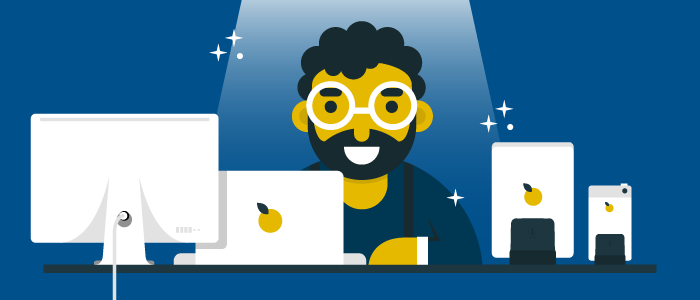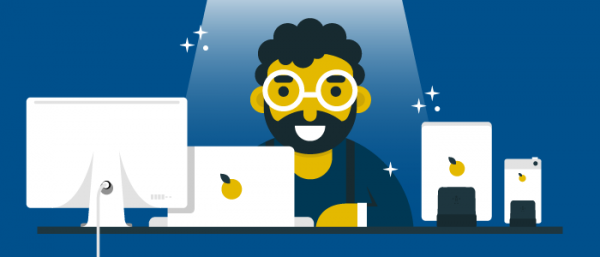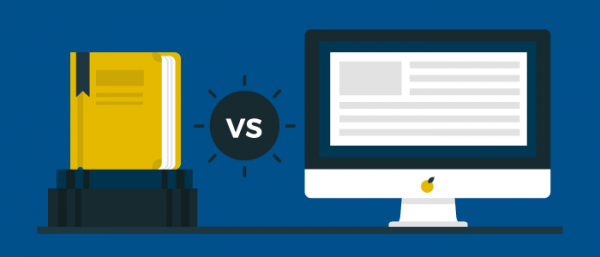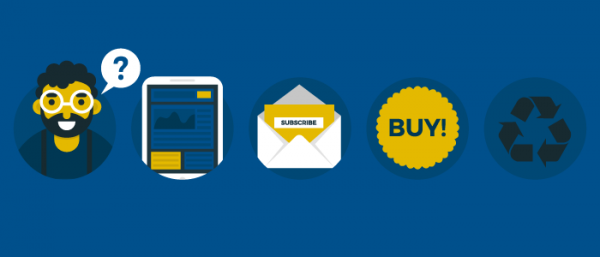
Users must always be the ones to dictate which platforms you use to publish your multi-platform products

Periodical publishers have historically considered content to be disposable – generated once for use in a periodical or book and then discarded.
Multi-platform publishers who recycle, reuse, and re-publish information in many different multi-platform products (portals, periodicals, books, membership websites, libraries, courses, events, DVDs, CDs, and more) are the ones – large, small, or independent – who will succeed.
Also, customer-driven content management has become commonplace, allowing a diverse community of online users to engage and be engaged in many different ways, compared to simply subscribing to a magazine or buying a book, and the resulting environment has become much bigger and more sophisticated than in the past.
Organizing content around the customer, therefore, really means organizing content efficiently and effectively to extend your brand and drive both revenue and profit.
[text_ad]
Validating the success of one-shot multi-platform products

We look at products and subscriptions as two different things. When we say products, we are referring to non-renewal products: books, single-issue sales, digital reports and white papers, CD-ROMs, DVDs, and other one-shots.
If you question the value of one-shot products sold online, try this simple test: Offer the same item as a renewable and a non-renewable product.
- Offer a single one-shot – a book, binder, or loose-leaf service – in which you deliver all of the information at once and charge them once.
- Using the same pitch, the same set of benefits, the same landing page, etc., offer the same product as an ongoing renewable product. Tell them you’re going to charge them today, keep it up to date, and then charge them again in 12 months.
 Use your data to determine if what you’re selling should be sold as a one-shot or a subscription. Of course, we encourage you to run your own tests.
Use your data to determine if what you’re selling should be sold as a one-shot or a subscription. Of course, we encourage you to run your own tests.
In another example, imagine you’re about to embark on your first significant financial investment. You’re nervous you’re going to make the wrong move, you’re confused about your options, and you simply wish you could get five minutes with Warren Buffett to get his advice. Which user experience would you choose?
- Buy a book by Warren Buffett and read it.
- Join a membership subscription website by Warren Buffett; search for and read information on the topic when you need it.
- Attend a live event hosted by Warren Buffett where you can meet and ask questions relevant to you.
The book offers a high level of convenience (read it when and where you wish at your own pace for a low cost) and low fidelity (words on paper in a linear presentation).
The membership offers moderate convenience (access the site via computer 24/7, search content, and print the PDFs for offline reading) and moderate fidelity (words on screen that are fully searchable and a live member forum to discuss issues).
The live event offers low convenience (travel to the conference on two specific days with a per-person cost plus travel expenses) and high fidelity (live interaction with Warren and his team).
As a publisher, you may not be able to offer the ultimate, high-fidelity experience of face time and one-on-one training for your customers, but there are ways you can use your different multi-platform publishing platforms to try and meet those human needs, as we’ve written about here.
5 steps for creating user-centric multi-platform products

Here’s the progression to follow to create user-centered products:
1. Discover your audience’s common information needs.
The first step for publishers is to figure out the common needs of your audience. Identify what interests them, what they want to learn, what they want to buy – basically, what they are looking to your site to produce for them.
2. Build a Portal with valuable content.
Then, build a free Portal, filled with valuable, useful content that fills those audience needs – B2B or B2C tips, evergreen how-to content, case studies, product reviews, news analysis, etc., inside information your customers deem valuable, and give that core content away for free (this content is not the same as what’s published in your magazine).
3. Invite visitors to subscribe to a free email newsletter and social networks.
Add value to the site experience by inviting visitors to subscribe to a free email newsletter, by giving away a freemium, where they surrender an email address. This results in a rich database of users with whom you now have a relationship.
4. Mine the resulting database with revenue-generating offers.
Mine the names in your database to direct targeted users to your satellite sites (which may simply look like tabs in your navigation but are completely different business models), where you can sell relevant products of increasing value: a paid newsletter, a premium membership website, a book or report, a conference or event, etc. You are then in a position to derive a hefty ROI from what initially you gave away for free.
5. “Re” system of publishing: Recycle, reuse, republish.
Each bit of information given away for free should become a unit of content with several lives – created once and used, repackaged, and reused many times and monetized over and over again. In this “re” system of publishing – recycle, reuse, republish – a publisher also uses content written for, deployed to, and even contributed by readers to create additional products. Further, the content can be used for marketing purposes rather than spending money on costly media such as direct mail lists, television ads, billboards, pay-per-click, etc.
Special-interest media consumers will always choose multiple platforms to experience special-interest knowledge from a single source. This has many implications for how we gather, store, package, distribute, market, and support special-interest knowledge.
The journey we face reminds me of a favorite poem by Robert Frost:
The woods are lovely, dark and deep.
But I have promises to keep,
And miles to go before I sleep
And miles to go before I sleep.
I look forward to interacting with you on the many platforms you publish, as we all journey to the new world of multi-platform, special-interest publishing!


